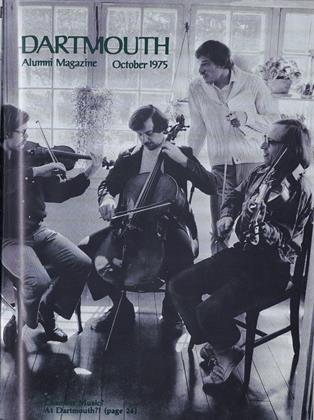In 1965, this reviewer entered the practice of law in Massachusetts and began paying the confiscatory auto insurance premiums faced by a Boston resident. As both attorney and consumer, I was shocked and dismayed over the auto insurance mess.
So was Jeffrey O'Connell, and in that same year 1965 he did something about it. With Harvard Law Professor Robert E. Keeton he wrote a book proposing a new form of motor vehicle insurance which, in simplest terms, provides accident victims with immediate payment of economic damages (mainly medical bills and lost wages) without regard to the negligence of the parties involved in the accident, a form of accident compensation previously available only on a limited basis to workers covered by workmen's compensation. As they say in Hollywood, the rest is history. The Keeton-O'Connell basic protection plan gained immediate attention in legislative bodies throughout the country. It has since resulted in the adoption of some form of no-fault auto insurance in several states, beginning with Massachusetts in 1970, and significant Congressional progress on national no-fault legislation.
Now, after more than a decade of efforts toward reforming the nation's system for compensating victims of auto accidents, Jeffrey O'Connell, a University of Illinois law professor, proposes in Ending Insult to Injury a plan for providing no-fault insurance coverage for persons injured in other circumstances - usually involving another's product or service - under which compensation is usually available now only through a court claim based on the other party's negligence.
Professor O'Connell presents considerable evidence that the current mechanism for compensating accident victims in the United States, traditional tort litigation, is inefficient and largely ineffective. Anyone attempting to recover damages for injuries resulting from a defective product typically faces problems of proof and resistance to settlement so great that success is remote. Unless the claim is significant, he also finds it impossible to hire an attorney. Medical malpractice cases are often even more complex, and malpractice claimants have the added problem of a doctor's reluctance to testify against a colleague. The result of the entire process is that persons with legitimate claims wait for years to receive what is in most cases inadequate compensation. In the mean-time, a large portion of insurance premiums is spent on lawyers, experts, and other costs incurred in determining the often-elusive "fault" of the parties involved.
What makes the non-auto injury problem different is not the disease but the unavailability of a ready cure. Whereas drivers already carry insurance against claims of others which can be easily converted to cover the insured and his passengers on a no-fault basis, no universal insurance scheme exists for other injuries (including major auto injuries) which can be converted to cover the victims' lost wages and other damages. And even the more generous national health plans presently before Congress would not restore lost wages - the principal monetary penalty faced by the injured person.
Professor O'Connell proposes to give doctors, manufacturers, and other potential defendants the option of electing no-fault casualty insurance under which injuries arising out of the insured's actions, products, or facilities would be compensated without regard to the negligence of either party. The principal inducements to elect such insurance would be (1) no liability for pain and suffering, (2) no liability for damages otherwise covered by medical insurance and other sources, (3) avoidance of the harmful publicity of litigation, and (4) potential premium savings due to lower legal and administrative costs. This "try-it-you'll-like-it" approach is seen as achieving a possible voluntary shift to no-fault compensation for injury while in fact taking nothing from the average severely injured party who presently receives inadequate compensation.
The crisis over medical malpractice insurance further confirms the inadequacies of our current method of compensating those injured, and Professor O'Connell's latest book is a timely and well-researched look at the problem and his proposed solution. The book does leave unanswered some questions concerning his plan's economic feasibility and its implementation in such complex areas as medical malpractice; although Professor O'Connell promises model legislation. And he dwells at too great length on selected legal and medical "horror stories" having emotional appeal but otherwise contributing little to his presentation. Nevertheless, EndingInsult to Injury does offer legislators, lawyers, doctors, insurance executives, and the general public an interesting study and proposal from a writer who, as co-author of one of the most farreaching social reforms of the past decade, will undoubtedly be involved in future solutions to the continuing problem of adequately compensating accident victims.
ENDING INSULT TO INJURY.By Jeffrey O'Connell '51. Illinois,1975. 254 pp. $7.95.
Last year, after practicing law in Boston, Mr.Clark returned to the College as assistant legalaffairs officer.
 View Full Issue
View Full Issue
More From This Issue
-
 Feature
FeatureBefore the Revolution
October 1975 By ALBERT F. MONCURE JR., RONALD V. NEALE -
 Feature
FeatureA Dialogue for Autumn
October 1975 By COREY FORD -
 Feature
FeatureQuartet in Residence
October 1975 By DAVID WYKES -
 Feature
FeatureA MEMORANDUM
October 1975 By JAMES L. FARLEY '42 -
 Article
ArticleThe College
October 1975 -
 Article
ArticleThe Trolley Never Stopped Here
October 1975 By GEORGE W. HILTON
Books
-
 Books
Books"The Golden Star of Halich"
OCTOBER 1931 -
 Books
BooksPROBLEMS IN INCOME TAX FUNDAMENTALS.
October 1937 By C. W. Sargent '15 -
 Books
BooksSplendor
MARCH, 1928 By H. B. Preston '05 -
 Books
BooksTHE ELUSIVE PLATO
JUNE 1930 By Harold E. B. Speight -
 Books
BooksCHICAGO: THE SECOND CITY
July 1952 By Herbert F. West '22 -
 Books
BooksTHE AMERICAN DISSENT: A DECADE OF MODERN CONSERVATISM.
MAY 1966 By VINCENT E. STARZINGER

